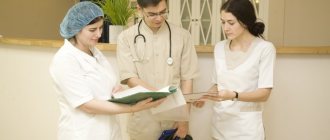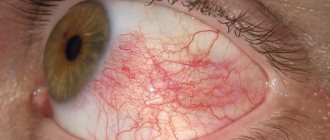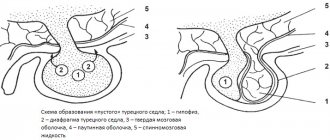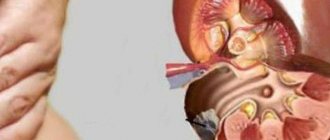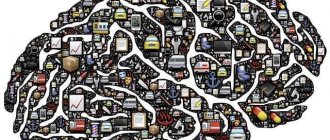Radicular syndrome is a complex pathology, the etymology of which can be different. Destructive changes in the vertebral discs occur in stages, so they are most often diagnosed when pain occurs.
Causes of radicular syndrome:
- pathological changes in the spine due to osteochondrosis;
- defect of the posterior wall of the spinal column cavity in the form of a hernia;
- hypoactivity due to sedentary work and refusal to exercise;
- significant deformation of the spine due to spondyloarthrosis;
- tumors, injuries and scars in the area of the base of the axial skeleton;
- serious consequences of osteoporosis in the form of vertebral fractures;
- the course of infectious diseases: tuberculosis, osteomyelitis;
- excessive force on the spine for a long time;
- frequently repeated hypothermia of the body (working in the cold);
- genetic predisposition to the disease;
- feature of human age-related changes.
Location of pathology:
1. Cervical region. The main symptom of damage to this area is neck pain, felt in the subscapular region and shoulders. The patient regularly feels tingling in his hands, and he regularly has a desire to stretch his neck muscles. The patient's skin becomes pale and hair thins. It is easy to identify the problem yourself, because it is enough to raise your hand high from the side of the affected area. If the cervical spine is affected, then such manipulation will be difficult or impossible.
2. Thoracic region. When palpating this part of the body, the main lesions are easily identified. A common mistake people make is that they confuse the disease with intercostal neuralgia and begin to self-medicate. Symptoms of damage to the thoracic region are also similar to cardiac colic, so they try to eliminate them without consulting a doctor with Corvalol.
3. Lumbar region. The vulnerability of this zone is obvious. Radicular syndrome of the lumbar spine is characterized by exhausting pain and frequent complications of the pathology. As nerve compression progresses, it becomes difficult for a person to move without assistance.
Diagnosis of the disease:
1. X-ray. It is produced in a two-plane projection: oblique and straight.
2. MRI. If it is impossible to make a diagnosis of a spinal lesion, magnetic resonance imaging is used.
Disease prevention:
- a change in professional activity that involves regular stress on the spine;
- regular exercise without excessive strength exercises;
- visiting the swimming pool and massage sessions;
- eliminating signs of obesity with the help of exercise therapy and special diets;
- wearing clothes according to the season and weather conditions;
- choosing the right shoes and avoiding bulky models.
How do physiotherapy treatments work?
Electrophoresis. The method involves placing electrodes connected to a special device on the body. The supplied current, affecting the nerves and joints, acts along a fading trajectory without painful sensations for the patient.
Reflexology. Treatment with special needles is usually carried out by a chiropractor. The puncture sites are determined after identifying problem areas in the spine.
Ultrasound. It is especially effective in eliminating pain in the sacrolumbar area. The intensity of the waves is determined by a specialist. The patient may feel slight vibration. Contraindications for the procedure include malignant tumors, pregnancy and serious blood diseases.
Magnetotherapy. It is prescribed for swelling of areas of pinched nerves, inflammation and pain symptoms. A magnetic field created by special equipment affects problem points for 10-20 minutes. Features of the procedure include the possibility of carrying it out in clothing and a plaster cast.
Treatment with mud. Healing baths are necessary to calm the nervous system, which has suffered from periodic attacks of pain in the spine or neck.
Radon baths. Active treatment with their use eliminates inflammatory processes and solves neurological problems.
Massage. It is necessary to strengthen the spinal muscles and eliminate signs of poor circulation in the tissues.
Why do the roots become inflamed?
Another disease is known as radiculitis, and this is the most common name among people, meaning the phenomenon is not dangerous and does not require special treatment. Just think, my back is hurt. The classic image of bent old men and women of the Soviet era, who, groaning, hold their lower back, illustrating sciatica, has today been replaced by younger patients. And the disease, from the category of not dangerous, becomes a serious pathology, as public awareness is growing, and many already know that radiculopathy should not be treated with turpentine or grated radish.
Radicular syndrome is a serious disease, and therefore it needs to be treated by a specialist, and not with folk remedies
A syndrome in which the nerve roots become inflamed is a complication, and the most common of all complications of spinal diseases. For example, osteochondrosis complicated by radicular syndrome is a classic consequence of the fact that timely treatment of this disease was not undertaken. Osteophytes form and grow, intervertebral spaces decrease, orifices become deformed and narrowed, and nerve endings are pinched. That is why pain with radiculopathy is not a symptom, but a syndrome.
The most common cause of radicular syndrome is advanced osteochondrosis
Protrusions and hernias can equally cause pinching. The same list includes injuries, tumors and spinal instability. And, of course, age, with which the supply of nutrients necessary for vertebral cartilage is depleted. The vertebrae “sag” and put pressure on the nerve endings.
Protrusions and herniations of discs also provoke radicular syndrome
Spinal pathology, age, excess weight or injury, especially if provoking factors are added to them, become the cause of vertebral subsidence. The spinal nerve leaves its canal as the entire spinal structure is deformed. The openings through which the nerves pass narrow. Inflammation of the roots begins, swelling and pain, which the swelling intensifies.
When the nerve is compressed, the nerve becomes inflamed, swelling and pain occur at the pinched site.
Most often, despite the fact that radiculitis can be both cervical and thoracic, the name of the disease is associated specifically with the lumbar region, and here's why. This zone bears the heaviest load, both from work, heavy physical activities, and from human existence itself, marked by the ability to walk on two legs. The lower back is the most mobile part of the spine (except for the neck, but the load on them is incomparable). It is in this area that various pathologies most often occur.
To study Subluxation of the cervical vertebra in a childThe lumbar spine is subject to the greatest loads, as a result of which this is where the risk of pinched nerve fibers is highest
Causes of radicular syndrome:
- osteochondrosis, if not treated;
- tumors in the spine;
The cause of radicular syndrome may be a tumor in the spine - intervertebral hernia - when the cartilage ruptures and the nucleus comes out, deformation and compression of the nerves occurs;
- violation of the spinal structure;
- injury directly and incorrectly fused vertebrae after injury;
Radicular syndrome often occurs due to spinal injury - weakening of bones and cartilage, which may be genetic, caused by age, or infection.
Physical therapy for nerve compression
It is better to prevent acute radicular syndrome than to eliminate its consequences. During the recovery period after a relapse, it is useful to perform the following exercises:
1. Lying down. Once on the mat, straighten your legs and place your arms along your body. The exercise consists of tensing and relaxing the abs at least 15 times. Next, the bent knees need to spring in the opposite direction from the upper body for a couple of minutes.
2. On all fours. After taking this position, you should, with leisurely movements, play like a cat, which arches and lowers its back. The exercise is performed until pleasant exhaustion occurs.
3. Roll on the ball. The item must not contain a traumatic surface. Having placed it behind your back, you should make smooth rolls on the ball back and forth on the floor.
4. Exercise with a hoop. The times of halahup have not yet come after the relapse. It is better to choose a light object with a flat surface. Spin the hoop for a couple of minutes.
5. Hanging on the horizontal bar. Ten minutes of this exercise twice a day is enough to strengthen the spine and obtain a positive result in case of frequent pain in its area.
Symptoms
Radiculopathy can be asymptomatic for a long time. The first clinical signs appear suddenly after sudden movements or physical strain. The pathology is characterized by a triad of symptoms: pain, motor dysfunction and sensory disturbances in the affected segment.
Pain is the main manifestation of the syndrome. It has a different nature, localization, degree of severity and is concentrated along the pinched nerve. Usually the pain is sharp, shooting or pulling, burning or burning. Its distinctive features are:
- Central distribution - from the spinal column to the limbs,
- Irradiation to neighboring areas: if the lower back is affected - to the leg, buttock, back of the thigh, chest - to the back, stomach and heart, neck - to the teeth, collarbone, arm,
- Increased pain with any movement,
- Gentle position of the patient, facilitating the general condition.
Patients have difficulty bending and straightening their limbs and limp when walking. Torso or torticollis leads to curvature of the spine.
Pain syndrome is accompanied by other symptoms:
radicular pain
Muscular-tonic tension of the muscles of the affected part, followed by their weakness, drying out, atrophy, paresis, flaccid paralysis,- Impaired sensitivity in the pinched nerve roots - numbness, burning, tingling, “pins and needles”, local feeling of cold or heat, hypoesthesia,
- Weakening or strengthening of reflexes - often hyporeflexia,
- Changes in motor activity - difficulty bending the knee, abducting the big toe, rotating the foot, fascicular muscle twitching,
- Change in skin tone - pallor, blueness,
- Swelling of the affected area with smoothing of folds,
- Increased sweating at night,
- Trophic disorders - thinning, increased vulnerability and poor healing of the skin.
Simultaneous damage to several nerve roots at once is manifested by mixed symptoms and very intense pain, which knocks a person out of the normal rhythm of life and requires immediate medical attention.
The symptoms of the pathology depend on the location of the lesion. When the roots are pinched in the cervical segment of the spine, the following symptoms predominate:
- Pain in the neck, back of the head, crown, shoulder, face,
- Restricted head mobility
- Tilt of the head towards the affected side,
- Cephalgia,
- Dizziness with nausea
- Weakness in the hands
- Numbness of the skin on the head, neck, shoulders and upper chest,
- Twitching of the muscles of the shoulder girdle and upper limbs,
- Sharp pain on palpation of tense suboccipital muscles,
- Muscle wasting and hyporeflexia.
In the absence of adequate treatment, cervical radicular syndrome leads to cerebral dysfunction. This is due to the close location of the cervical spine and the vessels supplying the brain.
Video: typical manifestations of radicular syndrome
Damage to nerve fibers in the thoracic region manifests itself:
- Acute pain between the shoulder blades, reminiscent of a heart attack,
- Diffused pain throughout the chest,
- Shallow breathing
- Inability to bend and turn freely,
- Crawling "goosebumps" on the skin of the chest,
- Dysphagia,
- Violation of esophageal peristalsis,
- Pain in the mammary gland,
- Dyspeptic symptoms,
- Signs of an acute abdomen with damage to the lower thoracic roots.
Thoracic radicular syndrome must be differentiated from acute coronary insufficiency, gastric ulcer, peritonitis, cholecystitis, pneumonia. To do this, you should consult a doctor.
Lumbar radicular syndrome is manifested by the following symptoms:
- Acute, shooting pain of a short-term and paroxysmal nature, radiating to the buttock, leg, perineum,
- Limitation of leg mobility
- Weakness in hip flexion,
- Numbness of the skin of the buttocks, thighs, legs,
- Muscle wasting in the affected area,
- Decreased knee and Achilles reflexes,
- Cramps in the leg muscles.
If patients ignore the disease and are not treated, dysfunction of internal organs develops: intestinal paresis, enuresis, fecal incontinence, sexual impotence.
Video: lumbar radicular syndrome
Manual therapy
With a mild effect on the muscles, radicular spine syndrome is treated as follows:
1. Warm up the muscles. To carry it out, they are initially relaxed, while acting on the trigger points of the back. The fascia is then released through myofascial release.
2. Treatment of the spinal column. It can be treated in this way using soft techniques (MMT), which are fundamentally different from classical methods. With the new approach, radicular nerve syndrome is blocked not by stretching the ligaments, but by bringing them closer together. In the same way, the effect on the muscle corset is carried out.
3. Impact on joints. Soft therapy techniques are also used to relieve pain. MMT according to the Mulligan system is carried out using a special belt. The advantages of the technique are the safe removal of load from problem areas during joint mobilization.
Diagnostics
Some people want to begin treatment for lumbar radicular syndrome right away. At the same time, it is important to first make an accurate diagnosis in order to understand what exactly to deal with. Medical specialists will definitely conduct an examination if a person contacts them with complaints. Just knowing the symptoms will not be enough to determine what measures need to be taken for treatment.
The doctor will definitely conduct a visual examination, as well as palpation. At the same time, it will be possible to suspect a pathology based on certain signs that distinguish this disease from other pathologies. Pain will be observed in the lower back, while the unpleasant sensations subside significantly when the person lies on the healthy side.
A specialist can refer a person for certain examinations. Among them are radiography, which is performed in lateral and direct projection. With its help, you can understand whether there are negative changes in bone tissue, as well as how significant they are. In addition, it will be possible to understand whether a person has osteochondrosis, which can be accompanied by radiculitis. Not all people are sent for examination, because it has side effects.
Magnetic resonance imaging is popular , and this can be explained by the fact that the procedure is affordable and safe. At the same time, it is informative; with its help, you can identify various deviations in health status that would not be visible during other examinations. It should be noted that a medical specialist will be able to evaluate not only the vertebrae themselves, but also the muscles, blood vessels, ligaments and nerves. It is for this reason that it will be possible to understand as accurately as possible what exactly is happening to a particular person.
For some citizens, myelography . During this examination, it is necessary to study the condition of the spinal nerve roots; a contrast agent is necessarily used to obtain more detailed information. Naturally, without diagnosis, the doctor should not prescribe a treatment regimen for lumbar radiculopathy. After all, you will first need to make sure that you are dealing with this particular disease. Once an accurate diagnosis has been made, you can proceed directly to therapy.
Purpose of the bandage
A special corset is prescribed if necessary to reduce the load on the lumbar column. There are three types of therapeutic bandages:
1. Orthopedic. After surgery for radicular syndrome, you cannot do without such a supporting corset. If there are serious problems with the cardiovascular system, the use of an orthopedic design may be prohibited.
2. Radiculitis. When worn, the vertebrae will return to their correct positions. During the restoration of impaired blood circulation, muscle spasms will be eliminated.
3. Shants collar. This type of orthopedic neck brace does not cause allergies and is prescribed for neurological disorders. There is a choice between an inflatable version of the corset, a rigid design and a soft model.
Diet for illness
Compression of the nerve roots often occurs in those who like to eat quickly. It will not do any harm if we are talking about a light salad. The list of prohibited foods for the above-mentioned pathology includes fatty-based dishes flavored with seasonings and salt. The exceptions are bay leaves, dill and coriander.
Radicular syndrome symptoms will weaken if you fast for a couple of days at the peak of the disease. After the stated period of food abstinence, you can without fanaticism include berries, fruits and vegetable juices in your diet. When the manifestation of the disease significantly weakens, you should diversify the menu with fish, lean meat, and soups without legumes. With complete remission, you can eat everything except salty foods, which can cause swelling. As for drinks, it is recommended to opt for dried fruit compotes.
Characteristic
Lumbar radicular syndrome quite often develops against the background of other diseases, for example, osteochondrosis, protrusion, intervertebral hernia, as well as osteophytes .
Due to such problems, the nerve root begins to suffer, which is pinched or regularly irritated by the vertebrae. By itself, it includes sensory and motor fibers, while it is surrounded by blood vessels.
If this area is affected, then radiculitis occurs, which mainly appears in the lumbar region. This localization is explained by the fact that it bears significant loads, while it is most susceptible to degenerative changes.
Some people believe that lumbar radicular syndrome can only occur in older people. At the same time, there are quite often cases when it was diagnosed in young citizens.
This is due to the fact that the disease occurs due to provoking factors that can be observed even in everyday life. If a person does not want to face such a problem, then it will be extremely important for him to take care of his health.
Consultation with a specialist
During a patient’s visit, the doctor carries out the following work:
1. Conversation. By asking leading questions, the specialist finds out the history of the disease. Next, he clarifies the patient’s general condition and conducts a dialogue about current health problems.
2. Study of photographs. If the patient brought them with him, the doctor analyzes the information provided. Then, based on the data obtained, the patient’s individual card is filled out.
3. Palpation. It includes a careful examination of the affected areas of the spine. After a visual examination, the patient is offered to undergo muscle testing.
4. Selection of treatment option. All its principles are spoken out loud, and the patient’s questions are answered.

